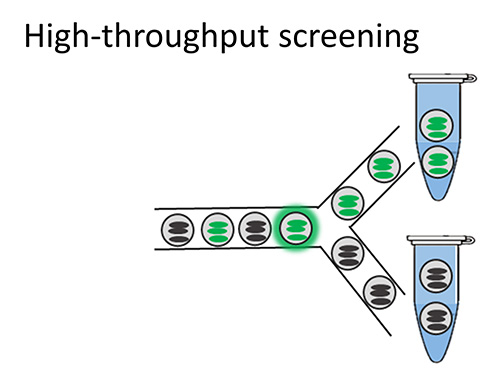 |
The design–build–test cycle of synthetic biology has enabled bio production of a diverse range of valuable products. However, due to the complex nature of the biological systems, it is always difficult to engineer a new biological system as predicted. Thus, testing and screening platforms have been placed on higher demands. Although the conventional testing and screening have been facilitated by automation solutions (such as liquid handler and colony picker), it is still tedious, costly, and time consuming. More importantly, the throughput has not met the requirement to make engineering new microbes economically viable. We have built an ultra-high throughput screening system, which has many advantages over existing screening methods, such as miniaturized reaction volume (total cell culture, reagent volume for 1,000,000 droplets screening is less than 5 mL), plastic consumables saving (a few of 1.5 mL tubes are sufficient for the screening process), and ultra-high throughput (1,000,000 droplets screening within 1 day) which is envisioned to have great applications in biomanufacturing.
|